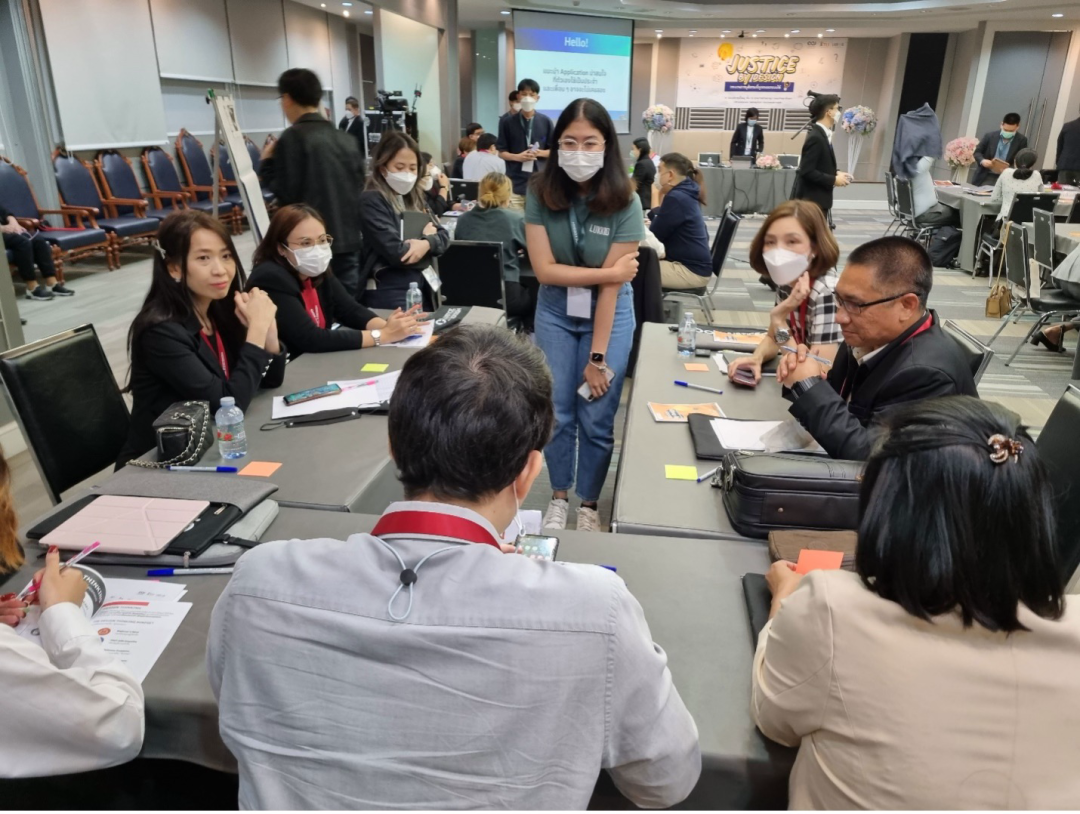Disclaimer:
Please be aware that the content herein has not been peer reviewed. It consists of personal reflections, insights, and learnings of the contributor(s). It may not be exhaustive, nor does it aim to be authoritative knowledge.
Learnings on your challenge
What are the top key insights you generated about your learning challenge during this Action Learning Plan? (Please list a maximum of 5 key insights)
Court User Needs Unmet: Current court procedures in Thailand often fail to meet the diverse needs of court users, especially vulnerable groups like the elderly, the economically disadvantaged, and those with limited access to technology.
Lack of User-Centered Design: There is a significant gap in the court system’s design, where the user's perspective and experience are not adequately considered or prioritized, leading to dissatisfaction and accessibility issues.
Importance of Design Thinking: Applying design thinking methodologies in the court system can be highly effective in identifying and addressing user pain points, leading to more efficient and accessible justice services.
Legal and Procedural Constraints: There are inherent legal and procedural challenges within the court system that may hinder the implementation of a People-Centered Justice approach, necessitating innovative solutions to overcome these barriers.
Stakeholder Engagement is Crucial: Successful implementation of a People-Centered Justice approach requires active and effective engagement with various stakeholders, including court personnel, legal professionals, government officials, and civil society organizations.
Considering the outcomes of this learning challenge, which of the following best describe the handover process? (Please select all that apply)
Our work has led to a significant change in public policy at a national or local level, Our work has been picked up by UNDP or the government and has now expanded geographically in our country
Can you provide more detail on your handover process?
Stakeholder Engagement: Continuously engage with key stakeholders, including judiciary members, legal professionals, and government officials, to ensure buy-in and support for the initiative. This also involves consulting with civil society organizations and potential beneficiaries for feedback and suggestions.
Policy Integration and Advocacy: Work closely with policymakers to integrate the People-Centered approach into existing legal frameworks and policies. Advocate for necessary legal reforms and resource allocation that support the scaling up of the initiative.
Please paste any link(s) to blog(s) or publication(s) that articulate the learnings on your frontier challenge.
Data and Methods
Relating to your types of data, why did you chose these? What gaps in available data were these addressing?
In-Depth Interviews: Chosen to gather detailed, qualitative insights directly from court users, legal professionals, and other stakeholders. These interviews help in understanding the nuanced experiences, challenges, and needs that might not be evident in quantitative data. They address the gap in understanding the subjective experiences and pain points of individuals interacting with the court system.
Participatory Observation: Selected to observe real-time interactions and processes within the court system. This method provides a deeper understanding of the actual workings of the court procedures, user behavior, and the interaction between court officials and the public. It helps bridge the gap in observational data, giving a direct view of operational efficiencies or inefficiencies and user experiences.
Why was it necessary to apply the above innovation method on your frontier challenge? How did these help you to unpack the system?
Testing Solutions in Real Context: Prototyping allows for the development and testing of new solutions in a real-world context. This is crucial in a complex system like the court, where theoretical solutions may not always translate effectively into practice.
Identifying Unforeseen Issues: By creating prototypes, potential problems and challenges that were not initially evident can be identified early. This is particularly important in a judicial setting where processes are interconnected and changes can have wide-reaching implications.
Engaging Stakeholders: Prototyping involves various stakeholders, including court officials, legal professionals, and users. This engagement is vital for gaining buy-in, understanding different perspectives, and ensuring that solutions are tailored to actual needs.
Iterative Learning and Improvement: The prototyping process is iterative, meaning that solutions can be continuously refined based on feedback and observations. In a complex system like a court, this allows for gradual adjustments and improvements, reducing the risk of disruptive changes.
Partners
Please indicate what partners you have actually worked with for this learning challenge.
Please state the name of the partner:
Court of Justice
What sector does your partner belong to?
Government (&related)
Please provide a brief description of the partnership.
The Office of the Judiciary has responsibilities related to the administrative functions of the judiciary, such as preparing the annual budget, financial management, supply management, personnel planning, building management, academic work, and promoting judicial work. These tasks are typical of organizational administration and are crucial in supporting the judiciary's primary mission to deliver systematic, efficient, and excellent justice administration.
Is this a new and unusual partner for UNDP?
No
End
Bonus question: How did the interplay of innovation methods, new forms of data and unusual partners enable you to learn & generate insights, that otherwise you would have not been able to achieve?
Innovation Methods (e.g., Design Thinking, Prototyping): These methods facilitated a user-centric approach, emphasizing empathy and iterative testing. Design thinking allowed for a deeper understanding of the user's needs and experiences, while prototyping provided a practical way to test and refine ideas in real-world settings. This approach led to insights that might not have been uncovered through traditional, more rigid methodologies.
New Forms of Data (e.g., In-Depth Interviews, Participatory Observations): By utilizing these data forms, the project tapped into qualitative insights that revealed the nuanced experiences and challenges faced by court users. These methods provided a rich, detailed understanding of the user journey and pain points, which are often not captured in quantitative data. This depth of understanding was crucial for developing solutions that are genuinely user-centered.Ω
Please upload any further supporting evidence / documents / data you have produced on your frontier challenge that showcase your learnings.
The closing form saves automatically or via the blue "save changes" button the top left. Thank you


 9Industry, innovation and infrastructure
9Industry, innovation and infrastructure 10Reduced innequalities
10Reduced innequalities 16Peace, justice and strong institutions
16Peace, justice and strong institutions
Comments
Log in to add a comment or reply.